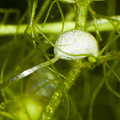Q: About dormancy requirements.
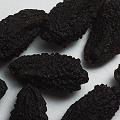 Ibicella lutea
Ibicella lutea
dormancy (seed)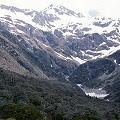 Drosera arcturi
Drosera arcturi
alpine habitat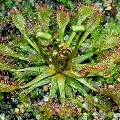 D. ×obovata
D. ×obovata
hibernacula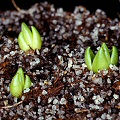 Pinguicula corsica...
Pinguicula corsica...
aren't they cute!
A: Some parts of the world do not experience much seasonal variation. For example,
the tropics stay warm year-round. Carnivorous plants such from these regions, such as Nepenthes,
may be grown all year. The weather is always fine!
But most carnivores grow in habitats that are
inhospitable during some season. To survive these times, plants either produce seed
and die or they enter a dormant resting period. If you attempt to grow a
plant that anticipates a resting period,
you must respect its dormancy requirements or else the plant will
simultaneously try to both grow and
rest, and in the resulting confusion it will languish and perhaps even die.
A fair analogy is that humans must sleep for several hours each day, regardless of whether they
experience night. Humans in places without nighttime, such as the polar regions of the Earth during the
summer or the Las Vegas casinos during any season, must eventually sleep.
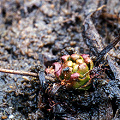 Drosera linearis
Drosera linearis
hibernaculum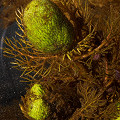 Utricularia macrorhiza
Utricularia macrorhiza
turion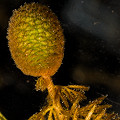 Utricularia intermedia
Utricularia intermedia
turion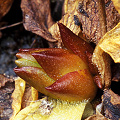 Pinguicula macroceras
Pinguicula macroceras
dormancy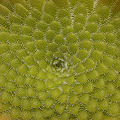 Pinguicula gypsicola
Pinguicula gypsicola
dormancy
Different plants enter dormancy during
different seasons. Many carnivorous plants rest during the cold of winter by forming tightly bound
hibernacula or turions---some Drosera, Pinguicula, and Utricularia are notable
for this. Some sundews such as Drosera binata may stop growth and die back to the soil without forming any
obviously specialized structure beyond a thick root system.
Other plants, such as Sarracenia,
Darlingtonia, or Dionaea (Venus flytraps), simply slow or stop growth.
Cold is not the only enemy. Excessive heat is another reason plants may hibernate. The Drosera
of Western Australia are famous for their adaptations to the dry hot summers. The
tuberous species regress to an underground
corm for several months of the year. Simultaneously, the delicate pygmy species
stop growing and
try to survive the heat and desiccating winds by hiding within the shade of their dead leaves and
stipules from the previous season's growth.
Venus flytraps and Sarracenia have a cool dormancy period of about three months.
These plants desire chilly temperatures, but still expect some sunlight. When you are trying to
determine what kind of dormancy conditions you should provide, think about the native habitat
for these plants. Venus flytraps are from the Carolina coastal regions. It gets pretty
chilly there, although rarely do they experience a freeze!
If you are puzzling how to provide a dormancy, read the FAQ entries on Venus flytrap dormancy
temperature ranges and especially methods
on how to provide winter dormancy, as they apply to many common carnivorous
plants.
It does not matter if you could provide your plant with luxuriant conditions year-round. If your
plant wants to enter dormancy you must provide an appropriately cold or hot resting period.
Some growers do not like this because they want to enjoy their plants every day of the year.
They try to devise ways of keeping their plants awake past their bedtime! This is never very
successful. Instead, grow some plants that are active during the winter, and some that are active during
the summer---this of course is a great way to feed the mania of collecting plants and to justify enlarging
your collection.
Page citations: Lowrie, A. 1987, 1989, 1998; Meyers-Rice, B.A. 2002;
Rice, B.A. 2006a; Schnell, D.E. 2002a; personal observation.

